
Marantz is a brand name that's synonymous with high-end audio. But as many audiophiles will already know: the company's well-regarded amplifiers and CD players (yes, it still makes those) cost a pretty penny. And those markets are, let's face it, inevitably shrinking.
That's why Marantz has braved new ground, by looking to embrace a new era and potential new customer base, with its first-ever wireless speaker series: the Horizon and Grand Horizon. And back in mid-June this year I got to try the latter, larger model in a private listening session.
Far from being comparable to one of the best portable Bluetooth speakers, indeed to call the Marantz Horizon series comparable to many of the best multi-room options currently available would be a stretch, given its asking price.
That's because the Grand Horizon costs a cool £5,250 ($5,500 for US readers, €6,000 for our continental friends). It may come almost as a relief, therefore, that the smaller Horizon model is priced at a more modest £3250/$3500/€3800. Fancy the tripod stand? That's an extra £650/$700/€750 for the smaller Horizon model only.
Iconic design

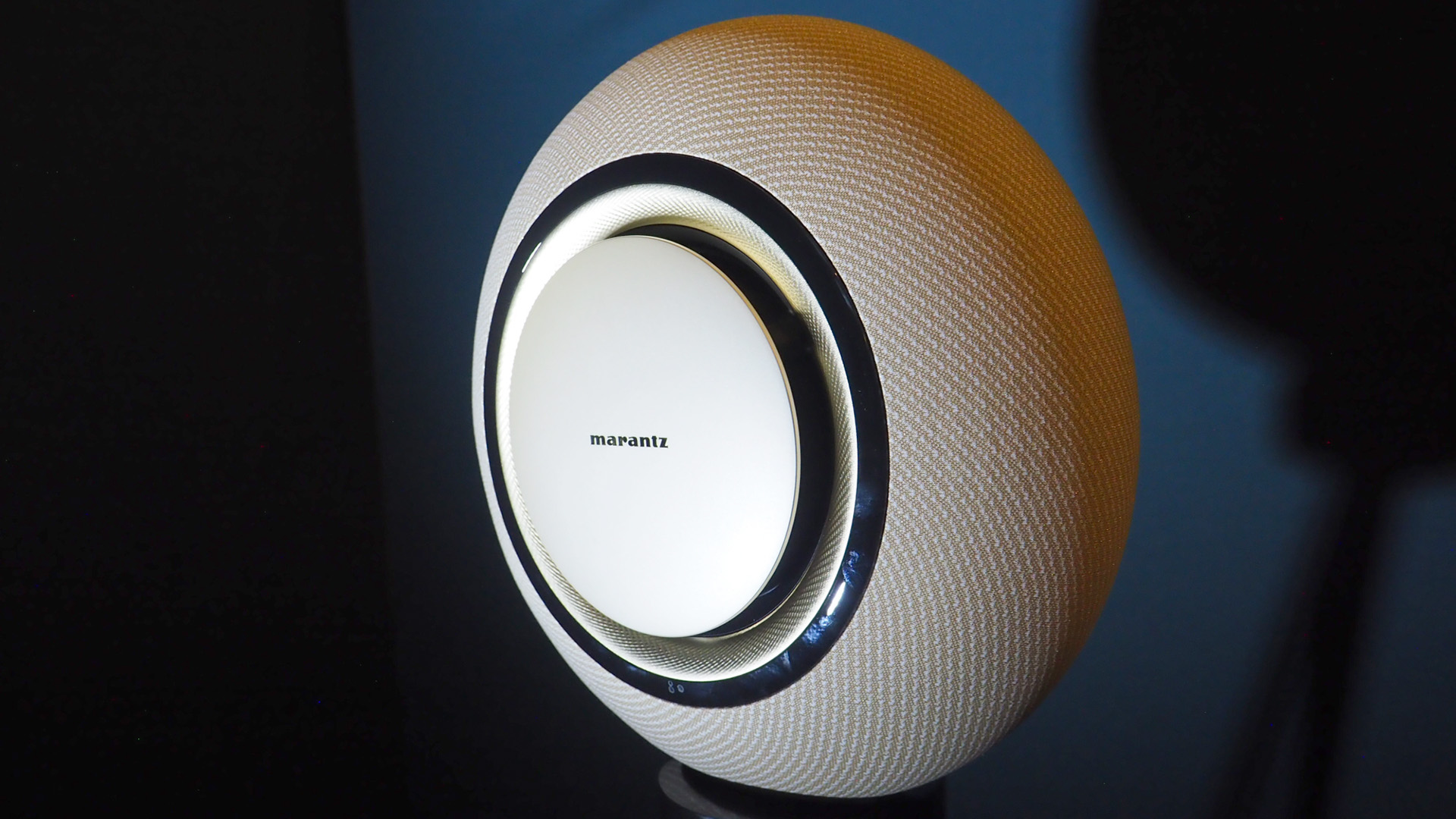




Yes, that's a lot of clobber for a speaker. But Marantz, in typical Marantz fashion, really isn't mucking about when it comes to design, materials and finish in the Horizon series. I've prodded and poked the pre-release models – and very nice they are too.
There are staples to Marantz's design: symmetry, a central 'porthole'-style visual, the tactility of materials, and the typically centralised logo. The Horizon and Grand Horizon tick all of those boxes, naturally, with a very circular front-on design that makes for an eye-catching centrepiece.
Available in Midnight Sky or Moon Ray finishes – or what I and, I suspect, you will refer to as 'black' and 'white' respectively – the attention to detail is what gives the Horizon range's design that "which art gallery is that on loan from?" visual style.
It starts with what I'll call the 'plinth': a polished marble base that's physically connected to the product, acting as its stand. It's visually satisfying, whether eyeing-up the white shards running through black or grey through white, and an immediate confirmation that this isn't 'just your average speaker' by any stretch of the imagination.
Predictably that marble block makes this a heavy bit of kit: the 39cm diameter Marantz Horizon is circa 20kgs, I'm told, while the 53cm diameter Marantz Horizon Grand is "upwards of 25kg" given its larger scale and differing speaker arrangement. It's the latter that I got to listen to all those months ago and, just like its marble base, this speaker delivers audio with just as much weightiness.
Amazing audio




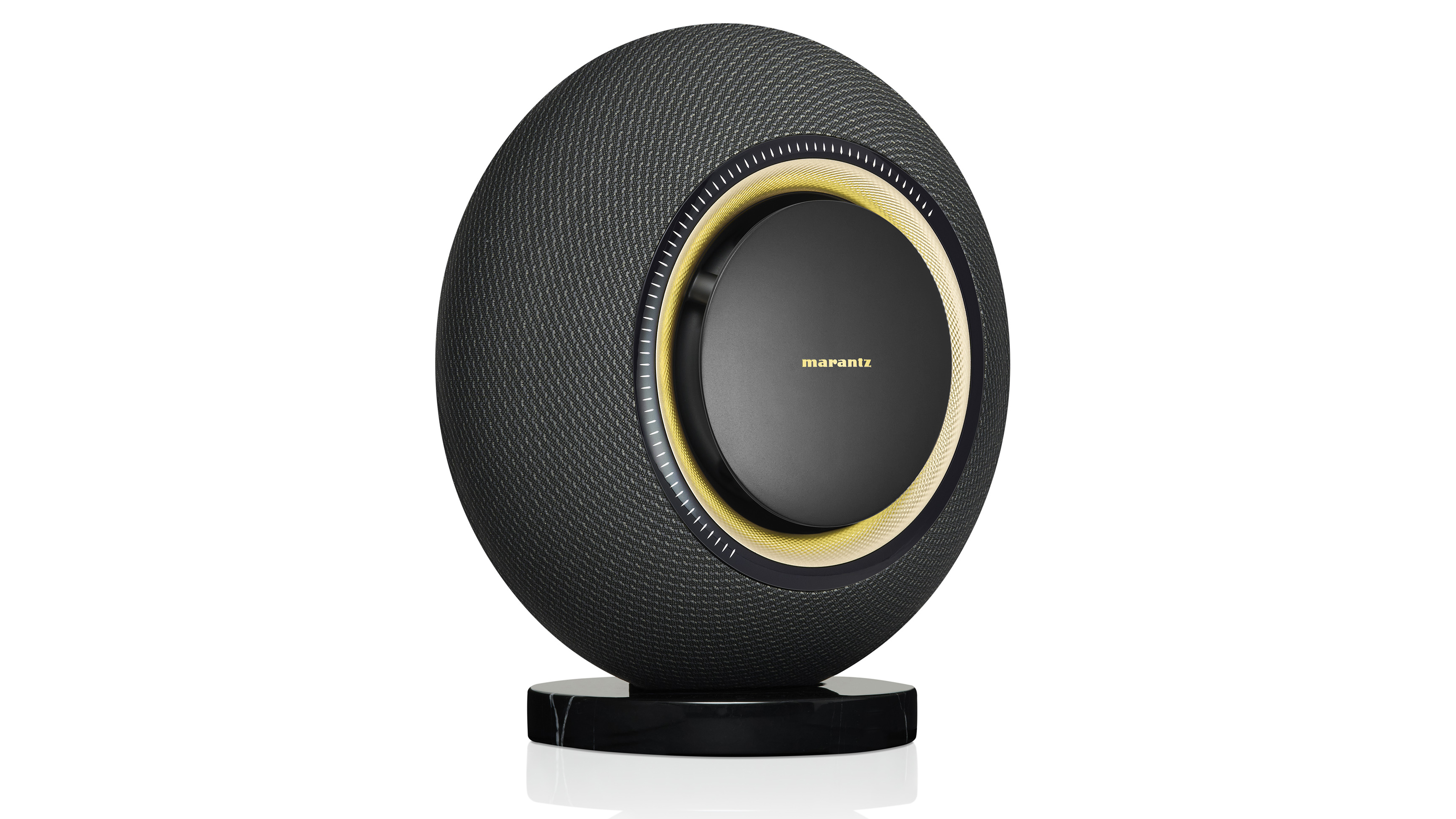

That's down to the audio components and structure, with the brand utilising a central 'Gravity Driver' at the heart of the product. It's so-named as it's like a black hole and, again, weighs rather a lot: "around 6kgs", my Marantz representative muses.
That centralised driver, acting as the woofer, is complemented by a series of additional drivers (all of which are neodymium), with a combined seven additional drivers and tweeters in the Grand Horizon providing a very tall and wide soundstage. The smaller Horizon has a combined five additional drivers instead – and I didn't get to hear that one.
Given the circular nature of the Horizon series' design, it's probably no great surprise to reveal that it's also Dolby Atmos compatible. All the decoding is done on-device and, also in true Marantz style, the hardware inside is second-to-none componentry: a new 'Marantz Rise Amplification' technology (GaN FET, Class D) drives everything with a combined 1000W output (800W for the smaller Horizon model) and can handle 192kHz/32-bit files. Talk about no compromise.
To my ears it sounds dreamy, too. And while we didn't get to hear any Dolby Atmos-mixed music, the four audio samplers showcased during the listening session each sounded sublime. From Anette Askvik's Liberty, with great width, super clarity, ample high-end pop (every letter 't' snapped beautifully, but without any sibilance); to HEDEGAARD's Ratchets showing off the low-end thump and rapid movement of bass. This wireless speaker will blow people's minds – not just their bank accounts.
Tactile controls
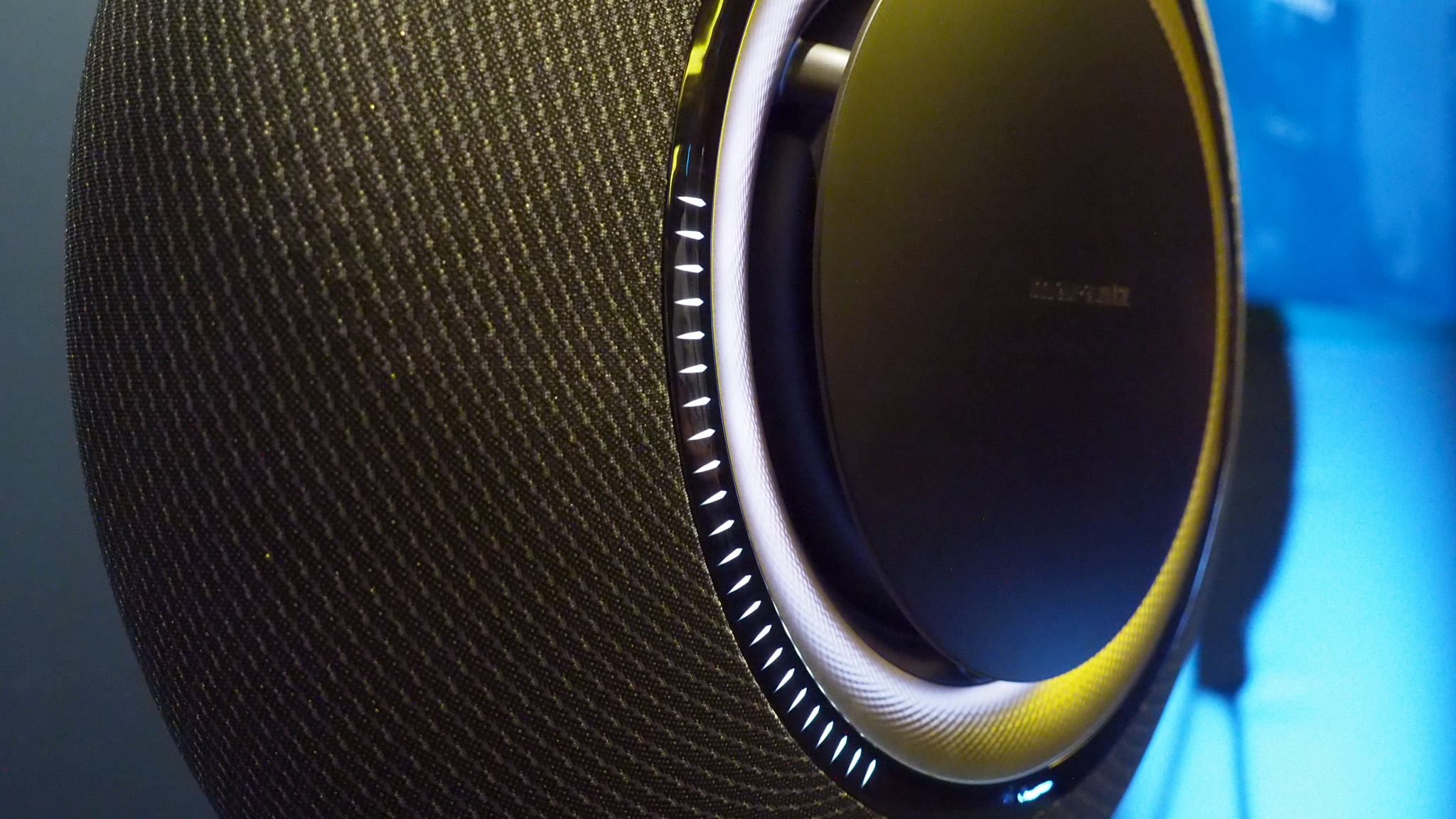

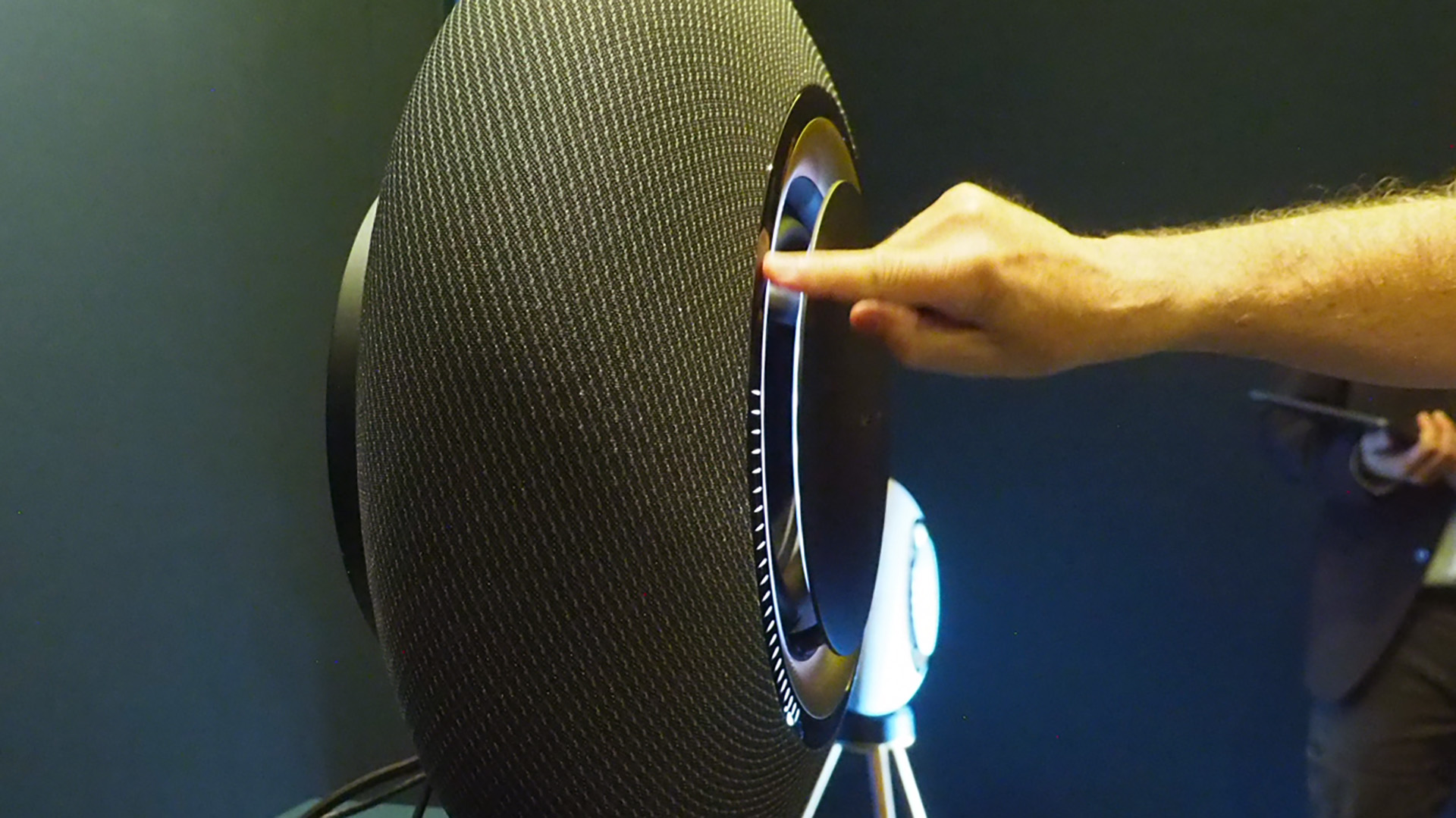
The Marantz Horizon can be controlled in two distinct ways: there's the Heos app, where you can take charge; or there's a proximity activation when within a metre of the speaker, which enables you to press on the central ring section to select your desired volume.
This central ring is illuminated by no fewer than 100 LEDs, each a representation of the volume output, which illuminate up to where you press. It reminded me of a giant-scale Apple iPod – although, as I'm told, "it's not a press-and-drag adjustment", rather a simple single tap to your desired volume setting.
The LED lamps will be auto-brightness adjusting and the app ought to enable deactivation/locking – although, at the time I tried out the Grand Horizon, this feature wasn't yet baked in. Some other things will be absent on shipping day one, too: Tidal and Amazon Music integration are on the books, but will take a little longer to implement (via an over-the-air update at "a later date").
Within the app you can also fiddle with some of the audio processing. Oh yes, Marantz has gone there too. There's a "spaciousness" setting, on a 1-100 level slider, which you can adjust to give a grander soundstage. By default it's just automated – but even then, across everything I heard, it makes a very strong case in delivering sound across a wide and tall stage. It sounds impressive.
Having tactile controls that are semi-invisible is a fun way to control the speaker. By contrast, what's very visible is the striking speaker-cover design, which is shrouded in what Marantz refers to as a "Radiance EcoFibre" – an Austrian-produced material comprised of 100% recycled ocean plastics. There are golden flecks within it to add some sparkle and, having touched this single piece – it's not crafted from multiple sections to cover the circular design, so removes in one – I think it feels great.
An eye-watering asking price
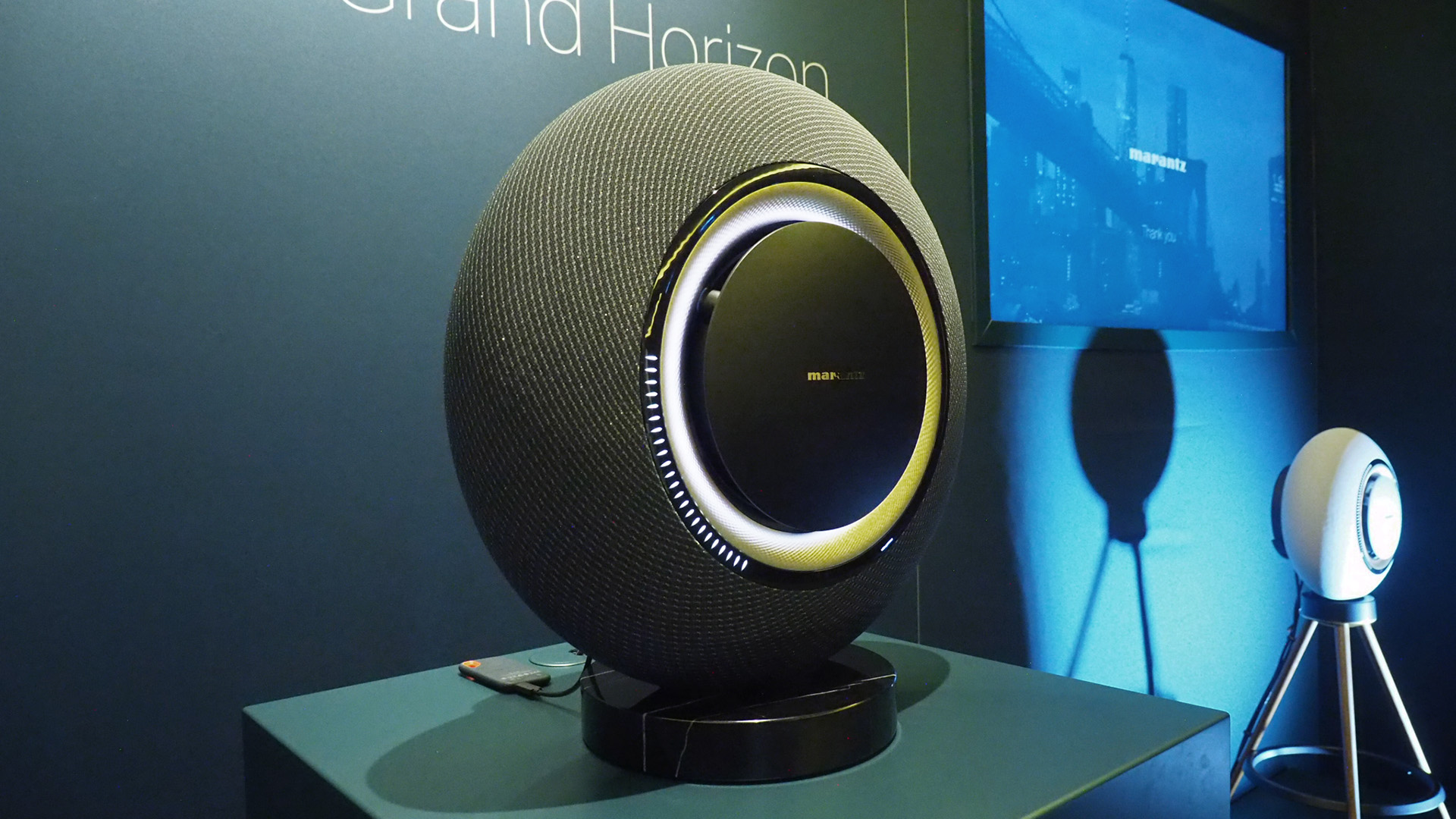
What certainly can't hide anywhere, however, is the asking price. There'll certainly be a market for a £5K+ wireless speakers, no doubt – and, with an HDMI eARC you can plug it into your (probably cheaper) telly to act as a not-at-all-practical soundbar – but it's not exactly going to be a big market, is it?
For context: the Devialet Phantom costs about £1,900 in the UK and sounds absolutely brilliant. A pair, if you're feeling flush, is still far less than Marantz's largest Horizon model. Granted, they can't do Dolby Atmos and don't come with a marble base to show-off just how well-oiled your bank balance is. But that's quite the financial contrast nonetheless.
Drop down a pricing gear and you'll find the likes of the Naim Mu-so 2 – granted, it's looking a little dated now, especially compared to the Marantz Grand Horizon's almost futuristic sci-fi aesthetic – or even the Bowers & Wilkins Zeppelin Wireless for much less, so that pricing contrast only becomes more stark.
But, hey, that's the nature of high-end audio. And I've got to say: what I've heard from the Marantz Grand Horizon I adored. That it's so niche only goes to make it more special, ultimately. So I'm already jealous of those who'll be able to buy one as a centrepiece to any given room in their home. Both models go on sale in January 2025.







